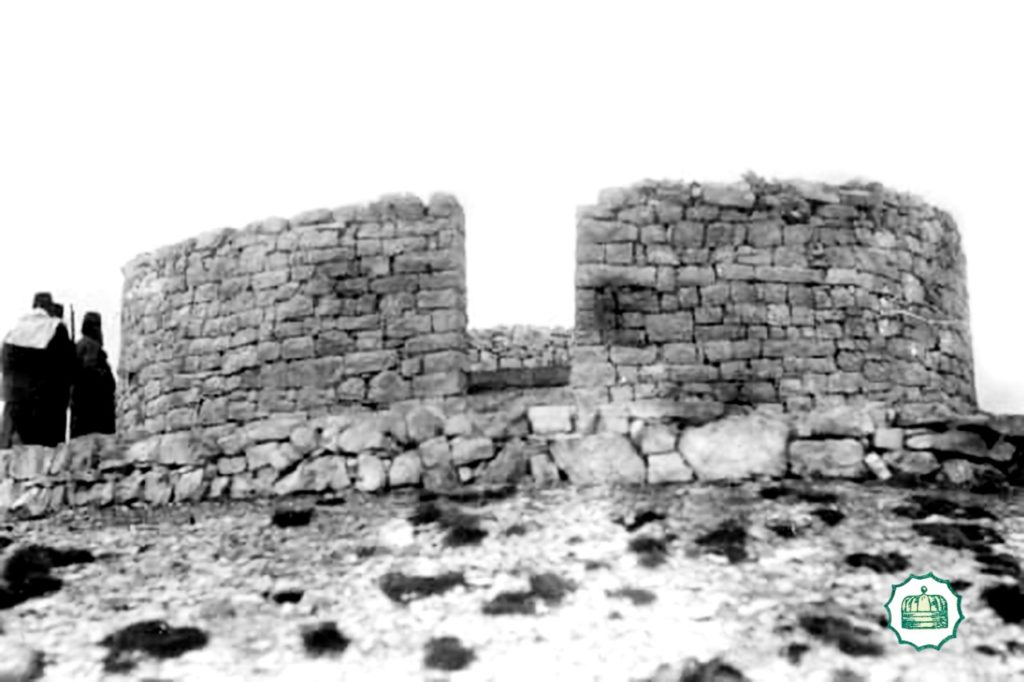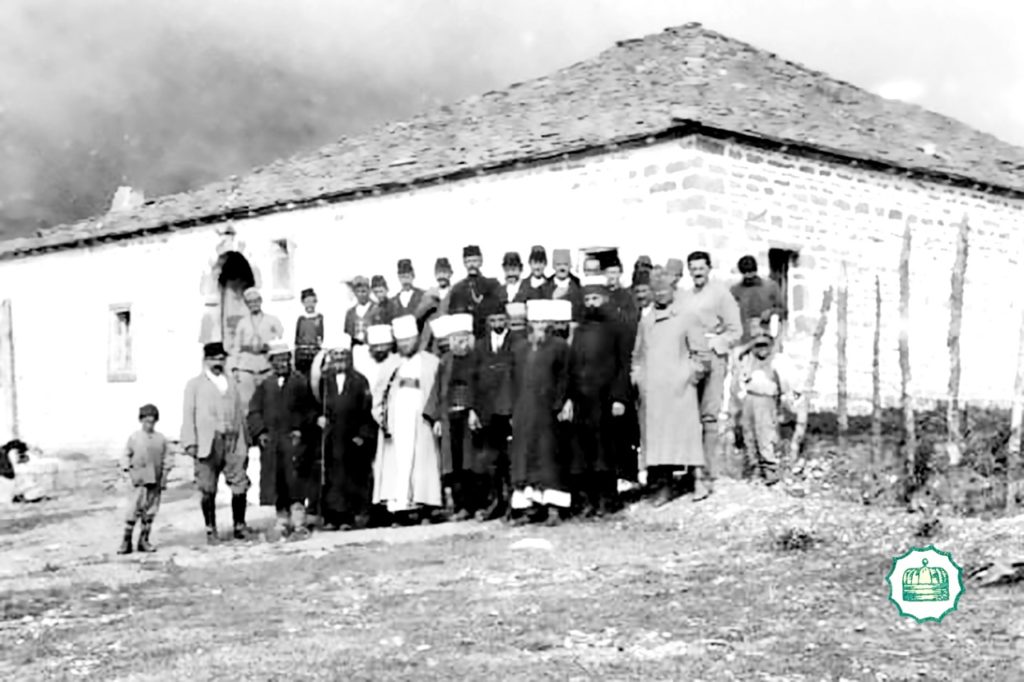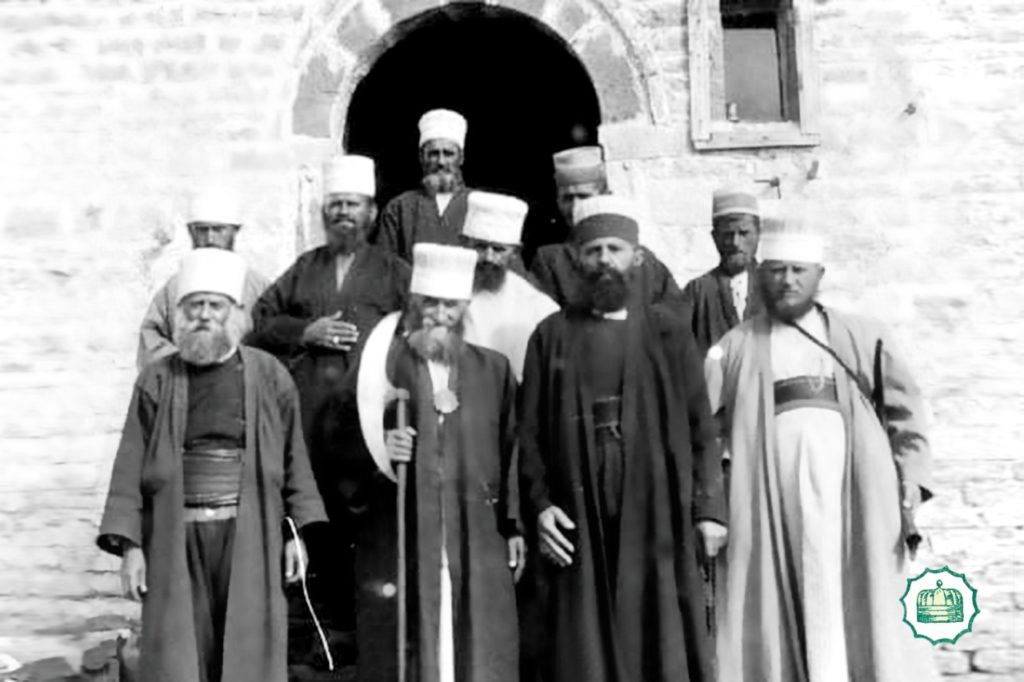Dede Edmond Brahimaj: Anniversary that coincides with the days of pilgrimage to the mystical mountain of Tomorri. Dervish Ilias Qafoku, has left his mark as a clergyman, patriot of charity

By Nuri ÇUNI
Secretary General, of the Bektashi World Headquarters
The commemoration of the 105th anniversary of the founding of the famous tekke in Kulmak, Tomorri-Skrapar mountain, which coincides with the days of the traditional annual pilgrimage, has aroused more interest for hundreds of thousands of believers who take the road these days (August 20-25) for to this Bektashi sacred object. At the same time, it has further increased the gratitude for the dervishes Iljas Qafoku, the well-known cleric, patriot and philanthropist who built this tekke by name. "The 105th anniversary of the building of the tekke of Kulmak by dervishes Ilias Qafoku, coincides with the days of pilgrimage to the mystical mountain Tomorri, in this traditional rite that gathers us in this sacred and mystical place. Dervish Iliasi has left his mark as a clergyman, patriot and philanthropist, not only in the South of Albania, but much wider, so he has been remembered, appreciated and will be remembered for generations… "- affirms among others the Bektashi World Leader, Haxhi Dede Edmond Brahimaj. This pilgrimage has a special innovation, as for the first time, the General Director of ‘Ecoenergia sh. p. k, Rako Paja, is managing the lighting of the tomb ‘Abaz Ali’, on the top of Tomorri with electricity from solar panels.
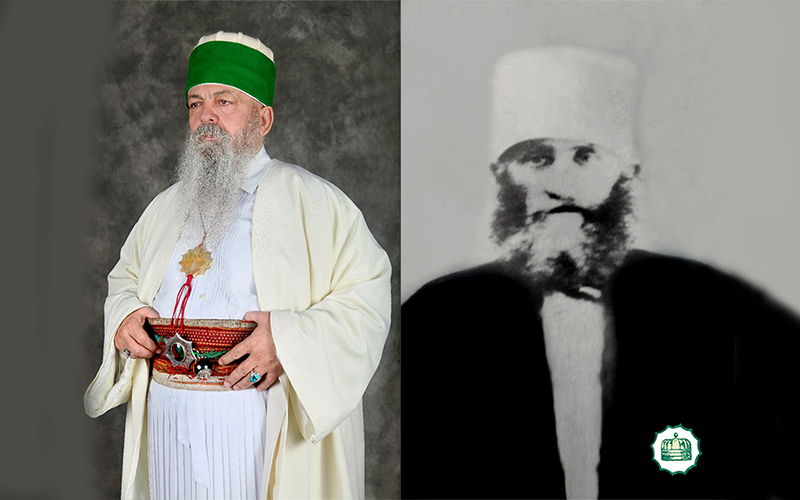
LITTLE FOR DERVISH ILIAS
Dervish Iliasi, was born on September 19, 1875, in Vërzhezhë Skrapar. He devoted his whole life to religion and homeland. We have his traces all over the South of Albania. He was meanwhile a rare benefactor, made roads, bridges, taps, erected the tekke, which he turned into a rare building, giving fame to the nationwide and world pilgrimage to Çuka-Abaz Ali of Tomorri. He is rare in construction works, not only visionary, of what he has to do, but on his own initiative, of what he sees, that humanity suffers, of roads, water, bridges, etc. By his unparalleled example, he taught everyone that if you work hard, there is nothing wrong with that. His work and deeds are very well reflected in the press of the time. He built roads, bridges, water supply systems in Skrapar, Korça, Kolonjë, Përmet, Tepelena, Vlora, Berat, Leskovik. The time press also provides interesting and clear information about the rare builder. According to the media of the time and memory, many times, Dervish Iljasi, started the construction of roads in Skrapar, in 1906. In the newspaper "Freedom " (1909-1910) it is said that dervish Iljasi has three years with a pickaxe in his hand, village by village, which makes and repairs roads… ”. In another letter from Frashër by Hasan Hoxha (teacher in Frashër), published in the newspaper of the time, it is stated: in the village he gathers the peasants and works for this much-needed work. Dervish Iljasi has repaired many roads in this way and now he has come to Përmet, not wasting a single day in vain and letting the world know that work is done by working on one's own, and not waiting from the world. "
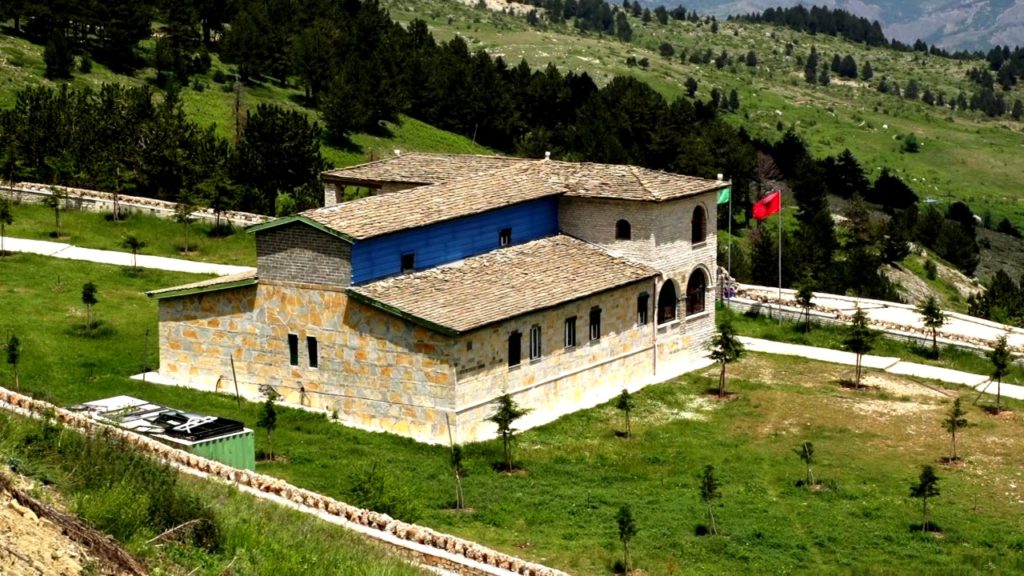
CONSTRUCTION OF TEKES
Its construction dates back to July 28, 1916. Dervish Ilias had knowledge of the early pilgrimage to Mount Tomor, not only knowledge since childhood when his parents from Vërzhezha took him to study with the deity on this mountain, but also in Turkey , where he learned about the pilgrimages to the holy places of his birth, which he also visited, in Karbala, Najaf, Egypt and visits with some fathers in 1910 in the holy places of the East: father Ahmet Turani of Tepelena, father Sulejmani of the Shtuf tekke, dede Kamberi had been in these holy places for three months. The tekke is built on a beautiful lawn, which is not beaten by the strong winds of the valley (Stoceni i Tomorica), as this beautiful place met some necessary requirements of a building, to live, as well as to develop and religious activities. The lawn had an area of about 2000 square meters. Nearby there was a water source, which was above the level of the lawn and this made it possible for water to circulate freely in the tekke. The country is protected from the risk of avalanches and is not hit by the southwest wind. Dervish Iljasi, with the experience of construction on roads, wells and taps, decided to build the tekke on this lawn. He built it with stone wall and lime mortar, covered with stone slabs, in the tradition of constructions used for centuries in Skrapar. He built the tekke according to Bektashi principles, with an architectural element: chimney cafe, square, ashefi, kitchen, dining room. Made and bakery, dormitory. The building was a four-story building, where to the east there was a room on the second floor called the father's room (mejdani). The Father's Room also served as a square, as described by Joseph Swire in The Bird Kingdom: The Great Room. wooden action as a wide three-step escalator, on which candles were burned in the yellow candlesticks. On his right, covered with tapestry, stood his father, and to his right, there was a candidate for a dervish… On the wall hung paintings of Bektashi saints and a large clock with a pendulum. ”
The rooms were with floor and ceiling, lined with pine wood, seasoned over the years. Each of the rooms had a chimney for heating. The building was occupied by the sun almost during the three quarters of the day, as it was on the north side of Tomor and all the rooms were filled with light. With the erection of the tekke and the religious services performed daily by the dervish Iljasi, day by day the tekke turned into a good place of reception, giving hope to every simple and faithful visitor, so much so that when everyone returned home they said: “This tekke , is blessed by dervish Iljas and has brought and will bring only prosperity to all people of all faiths and ethnicities. "
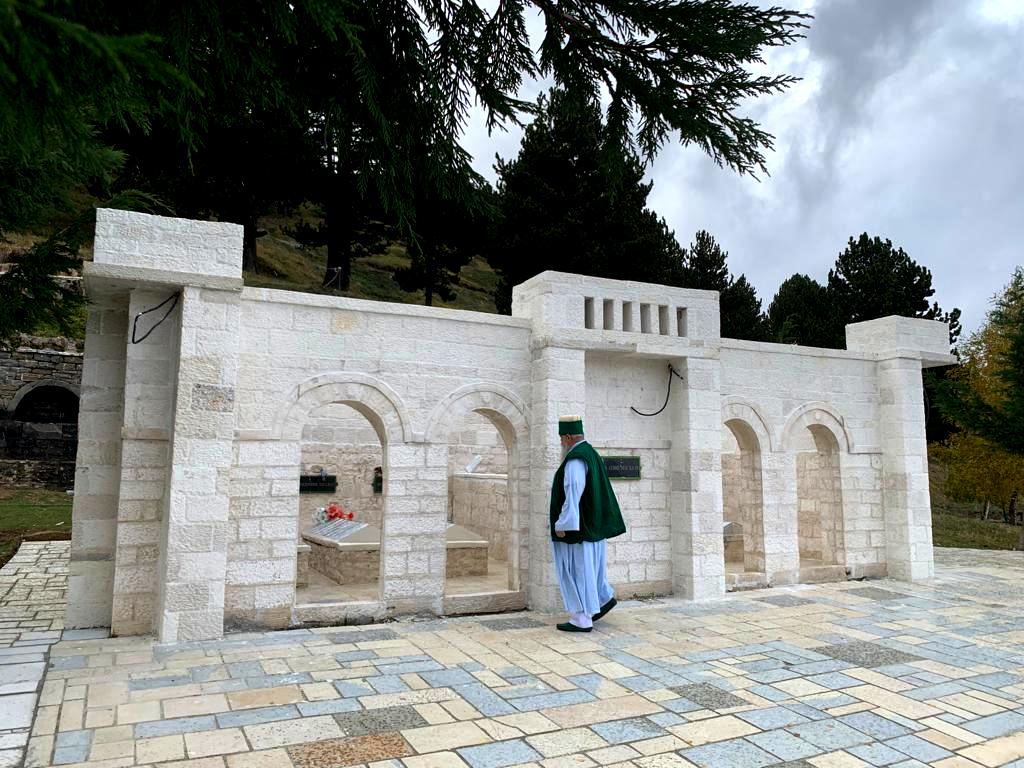
"Haxhi Dede Edmond Brahimaj: The 105th anniversary of the erection of the tekke of Kulmak by dervishes Ilias Qafoku, coincides with the days of pilgrimage to the mystical mountain of Tomorri, in this traditional rite that gathers us in this sacred and mystical place. Dervish Iliasi has left his mark as a clergyman, patriot and benefactor, not only in the South of Albania, but much wider, so he has been remembered, appreciated and will be remembered for generations… "
ARCHIVAL EVIDENCE
From the research in documents and numerous oral testimonies inherited, dervish Iljasi has contributed to the following works: Pedestrian road for caravan, Vërzhezhë-Çorovodë, in Skrapar, 1906; road, Gjurma Abaz Ali, Novaj, in Skrapar, 1906; the road Vërzhezhë-Kulmak, in Skrapar, 1907; road, Bargullas Stairs, Bargullas, in Skrapar, 1907; road Bogovë-Novaj-Kulmak, in Skrapar, 1908; Zaloshnje-Kulmak road, in Skrapar, 1908; Poliçan-Bargullas road, in Skrapar, 1909; the road to Cologne, 1909; cobblestone road of Poliçan, in Skrapar, 1909; Kakos-Surropull-Frashër road, in Përmet, 1910; Frashër-Përmet road, 1910; udha Dushar, Oparit-Korçë area, etc.… Here is what the director of the newspaper "Freedom" wrote at that time (1910):… years with pickaxe in hand village by village, where the roads are broken and so on: Skrapar, Përmet and in some areas like Kolonjë, Leskovik has done well. This year he came out again, made an unexpected path, Surropull-Kakos, where there was a river (a tributary of the Malind river) that flowed twenty times; those who removed poverty when they came to the Frashër market! The road made the side of the river, the villagers worked three days; on this road and where he finds some water and makes it a spring. ” . In this area passed the inhabitants of the villages, Sevran, Rok, Malind, Muzhençkë, Strenec, Qeshibes, Kakos… They did the shopping in Frashër, which was the center of Dangëllia of Përmet. The newspaper "Unity" writes about this situation, no. 18, Thursday, January 7, 1910: “... To have a carriageway from Korça to Berat and the roads Përmet, Skrapar, Tomor. To cross the mountain of Kakoz, following the river Osum, in the mills of Father Xhaferi and in Çorovoda and there in Berat. Mills have been erected from the tekkes: Sukë, Çorovodë, Gërmënj, Backë, Dervishije of Përmet (Gostomickë). Dervish Ilias before building a bridge, had in mind the opinions of the people, carefully looked at the wagon and the place where the flood occurred in the villages. He took the opinion of the village parish and gathered volunteers for the construction of the bridge. He first started making lime kilns (fireplaces), burning them and then extinguishing the lime stones in special pits, near the bridge. At the same time he cut the right trees for the bridge and provided other seasoned timber, collecting goat wool to mix with them, the slaked lime. It took the best carpenters who knew how to make bridges, both from Panariti and other places. The building materials he used were: lime, stone, wood, beams, etc. At the beginning of the constructions he would provide the raw material which was lime, for this he organized the work. He asked for volunteers from every family in the village, assigned them tasks: some cut wood and bushes, others worked in the lime kiln. In the first 4-5 days of the dervish Iljas took care to start the whole burning of limestone. When the burning was over, he extinguished the limestone in special pits near the building to be built. In other cases the dervish would appoint a person to distribute the lime evenly. He was worried that everyone would have clean houses inside and outside painted with lime… "
"Dervish Iljasi has a comprehensive activity over the years as a religious, patriotic and charitable. He dug wells, built roads, made taps, reconciled quarrels and grievances in every village; spread knowledge through work and sweat; assisted in the opening of schools and was in charge of activities for the education and freedom of Albania. As a charity, he also went to the villages of Radesh and Korita where he made wells and taps… ”
Dervish Iljasi has a comprehensive activity in years as religious, patriotic and charitable. He dug wells, built roads, made taps, reconciled quarrels and grievances in every village; spread knowledge through work and sweat; assisted in the opening of schools and was in charge of activities for the education and freedom of Albania. As a charity, he also went to the villages of Radesh and Korita where he made wells and wells. In a chance meeting, a traveler from Labëria, over Pirogosh met the dervish Iljas and had an interesting conversation, and among other things the traveler added, this beautiful place also wants water. He left for Korça in his distress. The next day the dervishes Iljas gathered the inhabitants of the village and told them about the opening of a well at the end of Radshi. At the place called Pirogosh, he dug 13 meters deep, took as a specialist Hasan Gurin from Radesh, who was a rare worker. When he had finished opening the well, the dervish took two oak saplings, rubbed them on his shoulders (blessed them), saying: "The oaks will grow in the shade, so that the weary travelers may rest, near the well of water." The traveler who returned after many days found the well open, drank water and refreshed himself happily, learned that this well had been made by dervishes Iljasi. Then he said, "I received the blessing of the dervish." All travelers coming from Çorovoda up the Pirogoshi hill would relax and cool off with the water of the well of the dervish Iljas….
Prepared by: Kujtim BORIÇI
DETAIL
CONTRIBUTIONS TO DERVISH ILIAZ
The word, work and mind of the dervish are materialized in: Lapni bridge, Lapan, (repair) in Skrapar 1910; Sharova bridge (repair), in Skrapar, 1910; the bridge over the Vjosa in Tepelena, (1908); the bridge over the river Shushica, in Lubonjë and Penkovë, Vlora, in the years 1909-1911; Vlushë bridge in Skrapar; fell of Bogova, in Skrapar; Well at Meni village Vërzhezhë, in Skrapar; well in Qafok neighborhood, complete repair, Vërzhezhë village, Skrapar, year 1913; well in Pirogosh, in Skrapar; well at the entrance of Dëvri Gorge, in Skrapar; the well at the mouth of the Dëvri Gorge, in Skrapar; usi in the village of Vlushë, Mançe neighborhood, in Skrapar; well in the village of Dushar in Korça; usi in the village of Surropull, in Përmet; well in the village of Podë, in Kolonjë…

